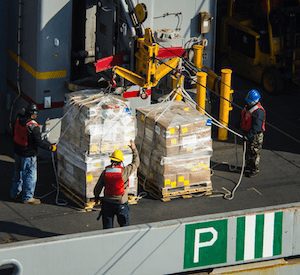What is MIL-STD-129? Barcode Requirements, Best Practices, and More


In the complex world of military logistics, precision and uniformity are paramount. Enter MIL-STD-129, a crucial military marking standard that serves as the backbone for labeling shipments, containers, and individual units in the United States Department of Defense (DoD) supply chain.
This comprehensive guide will delve into the intricacies of MIL-STD-129, exploring its significance, requirements, and best practices for compliance. Whether you’re a defense contractor, logistics professional, or simply curious about military standards, understanding MIL-STD-129 is essential for navigating the demanding landscape of military supply and transport

A standard for maintaining uniformity in military marking for shipment transported by ships and for storage, MIL-STD-129 is approved for use by the United States Department of Defense (DoD) and all of its departments and agencies. The standard outlines marking and labeling requirements for containers and shipments of military equipment and supplies and ensures consistency in package labeling for transport.
The goal of MIL-STD-129 is to provide for simple identification to make requisitions for restocking. It’s worth noting that MIL-STD-129 applies to labeling shipments and containers, while MIL-STD-130 applies to marking individual units loaded into cartons or onto pallets.

Complying with MIL-STD-129 involves following labeling requirements. Adhering to MIL-STD-129 best practices will help you avoid losses due to relabeling costs, delayed reimbursement, and negative supplier performance ratings.
There are two types of markings for each layer of packaging: human readable information (HRI) and machine readable information (MRI). HRI includes text and numbers, while MRI typically is a barcode. MIL-STD-129 specifically states how to format HRI and order it on the label including such details as font type and text size.
MIL-STD-129 also clearly states that barcode construction must follow several international standards so that they are readable by any barcode scanning software. Barcodes that do not comply with MIL-STD-129 may result in rejected shipments.
First, become familiar with the packaging layers specified by MIL-STD-129 in order to mark a complete shipment correctly. The standard defines multiple layers of packaging, beginning with the item being packed: the first level of packaging is referred to as the unit pack or unit container, or the smallest package that contains a part.
The next level is the intermediate container, which is the outer packaging of a set of unit packs.
Finally, the outermost layer of packaging for a set of intermediate containers is called the exterior container. Keep in mind that all container labels must include an Item Unique Identification (IUID), and these must be included on intermediate and exterior containers. Of course, label requirements vary for each packaging level.
Basic unit pack and intermediate container markings include:

The Department of Defense updates its standards periodically. The latest revision to MIL-STD-129 occurred in 2014, with Revision R.
The most significant change to occur with the revision is the DoD moving away from linear barcodes that cannot carry sufficient data to support modern automated supply chains. Expanding data requirements require identification of serial numbers and IUIDs, and linear barcodes are insufficient for this purpose because they cannot represent fifty-character IUIDs.
As such, Revision R replaces numerous linear barcodes with a single two-dimensional PDF417 symbol to make automated data collection systems capable of reading all shipment information including IUIDs and serial numbers.
MIL-STD-129R has altered some rules for radio-frequency identification (RFID): now, unless RFID specifically is exempted in a government contract, it should be used on all shipping units. RFID previously was required when DoD contracts contained the DFARS clause and required companies to include RFID tags to comply with MIL-STD-129; however, MIL-STD-129 does not require a specific format for RFID labels.
The data contained in an RFID label for the DoD typically contains your DoD cage code and serial number. Companies also must track which contract line items are in each of the boxes and pallets you label with RFID, and the DoD will submit a receiving report containing the RFID information.
The DoD RFID system then interrogates your boxes and finds the labels in its Wide Area Workflow database to discover which contract line items and UID instances are in each shipping container.
MIL-STD-129 plays a pivotal role in maintaining the efficiency and accuracy of the DoD’s vast supply chain. By standardizing labeling and marking requirements, this military standard ensures seamless identification, tracking, and management of military equipment and supplies throughout their lifecycle.
As technology continues to evolve, so too does MIL-STD-129. The shift from linear barcodes to two-dimensional PDF417 symbols and the increased emphasis on RFID technology demonstrate the DoD’s commitment to leveraging cutting-edge solutions for improved supply chain management.
For contractors and suppliers working with the DoD, strict adherence to MIL-STD-129 is not just a requirement—it’s a strategic imperative. Compliance helps avoid costly delays, rejected shipments, and negative performance ratings, ultimately fostering a more efficient and reliable partnership with the Department of Defense.
As we look to the future, it’s clear that MIL-STD-129 will continue to adapt to meet the changing needs of modern military logistics. By staying informed about these standards and implementing best practices, stakeholders can ensure they remain at the forefront of military supply chain excellence, contributing to the readiness and effectiveness of the United States armed forces
Our sales engineers are experts in automatic asset tracking, tagging and identification,a nd can answer all your questions. Get in touch now.
Lets Talk ›Enter your information and get a free checklist of the top questions to answer and tips to plan a successful asset tagging project for any asset management or tracking system implementation.